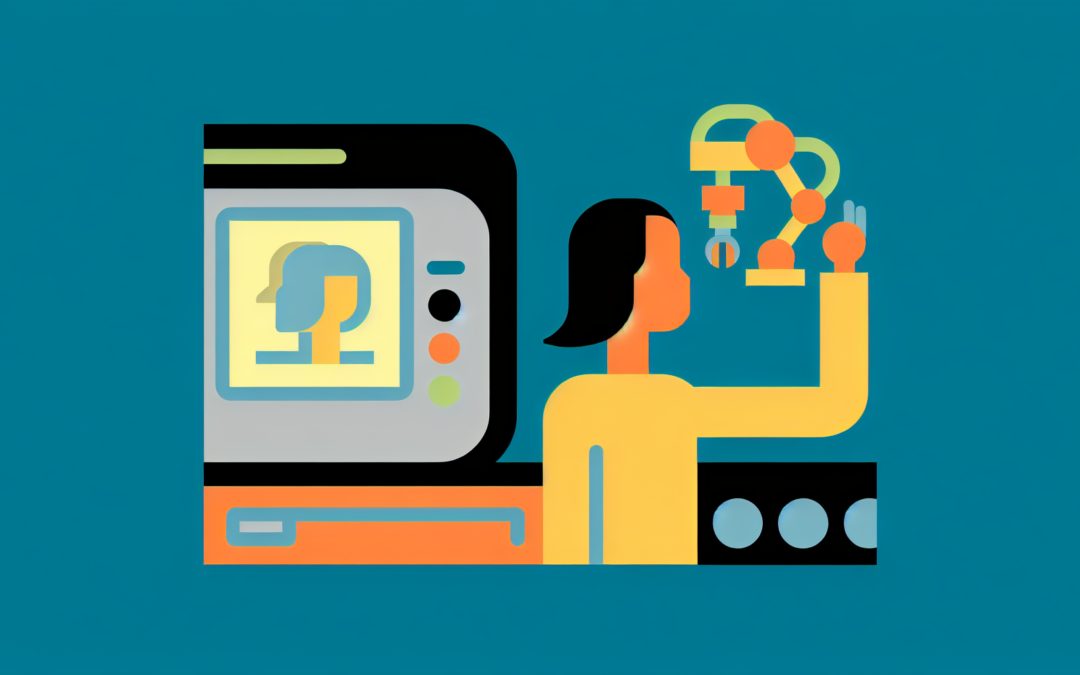Alright, folks, buckle up. We’re diving into the world of AI automation in manufacturing. It’s a bit like stepping into a sci-fi movie, but with more grease and fewer aliens. AI is transforming how we make stuff, and it’s not just about robots taking over. It’s about efficiency, precision, and sometimes, a little bit of magic. Let’s explore some case studies that show just how wild and wonderful this world can be.
Predictive Maintenance: The Crystal Ball of Manufacturing
Imagine if your car could tell you it was about to break down before it actually did. That’s predictive maintenance in a nutshell, but for manufacturing. It’s like having a crystal ball, but instead of seeing your future, you see the future of your machines. AI algorithms analyze data from sensors on equipment to predict when a machine is likely to fail. This means less downtime, fewer unexpected repairs, and a whole lot of saved cash. Companies like Siemens are already using this tech to keep their factories humming smoothly. It’s not just about avoiding breakdowns; it’s about optimizing the entire production process. And let’s be honest, who doesn’t want to avoid a meltdown at work?
But here’s the kicker: it’s not just about the machines. It’s about the people, too. With predictive maintenance, workers can focus on more strategic tasks instead of running around fixing things. It’s like giving them superpowers, but without the capes. And while we’re at it, let’s talk about the environment. Fewer breakdowns mean less waste and a smaller carbon footprint. So, it’s not just good for business; it’s good for the planet. Who knew AI could be so eco-friendly?
Quality Control: AI’s Eagle Eye
Quality control in manufacturing is like being a detective. You’re constantly on the lookout for clues that something’s not quite right. Enter AI, the Sherlock Holmes of the factory floor. With machine learning algorithms, AI can spot defects that the human eye might miss. It’s like having an eagle eye, but without the need for binoculars. Companies like BMW are using AI to inspect parts with precision that would make even the most meticulous inspector jealous.
But it’s not just about catching defects. It’s about learning from them. AI can analyze patterns and suggest improvements to the manufacturing process. It’s like having a coach who never sleeps, always looking for ways to up your game. And let’s not forget the speed. AI can process images and data faster than you can say “quality assurance.” This means quicker turnarounds and happier customers. And who doesn’t love a happy customer?
Supply Chain Optimization: The AI Jigsaw Puzzle
Supply chains are like giant jigsaw puzzles. One missing piece, and the whole thing falls apart. But with AI, it’s like having a cheat sheet for the puzzle. AI can analyze vast amounts of data to optimize every step of the supply chain. From predicting demand to managing inventory, it’s like having a personal assistant who never takes a coffee break. Companies like Amazon are using AI to streamline their supply chains, ensuring that products get from point A to point B with minimal fuss.
And let’s talk about the unexpected. AI can help companies prepare for disruptions, whether it’s a natural disaster or a sudden spike in demand. It’s like having a weather forecast for your supply chain. And in today’s world, where everything seems to be in flux, that’s a pretty handy tool to have. So, next time you’re waiting for a package, remember that AI might just be the reason it arrives on time.
Robotics and Automation: The Dance of the Machines
Robots in manufacturing are nothing new, but AI is taking them to a whole new level. It’s like watching a dance, but instead of dancers, you’ve got machines moving in perfect harmony. AI-powered robots can adapt to changes in the production line, making them more flexible and efficient. Companies like Tesla are using these robots to build cars with precision and speed that would make even the fastest human worker dizzy.
But it’s not just about speed. It’s about safety, too. AI can help robots navigate complex environments, reducing the risk of accidents. It’s like having a guardian angel on the factory floor. And let’s not forget the creativity. With AI, robots can learn new tasks, opening up a world of possibilities for manufacturers. It’s like giving them a brain, but without the existential crisis. So, next time you see a robot on the factory floor, remember that it’s not just a machine; it’s a partner in the dance of manufacturing.
AI-Driven Design: The Creative Genius
Designing products is an art, but with AI, it’s also a science. AI-driven design tools can analyze data to create products that are not only functional but also beautiful. It’s like having a creative genius at your fingertips. Companies like Autodesk are using AI to help designers create everything from buildings to consumer products. It’s like having a muse, but one that never runs out of ideas.
And let’s talk about customization. AI can help manufacturers create personalized products at scale. It’s like having a tailor for your gadgets. And in a world where everyone wants something unique, that’s a pretty powerful tool. So, next time you’re admiring a beautifully designed product, remember that AI might just be the artist behind it.

